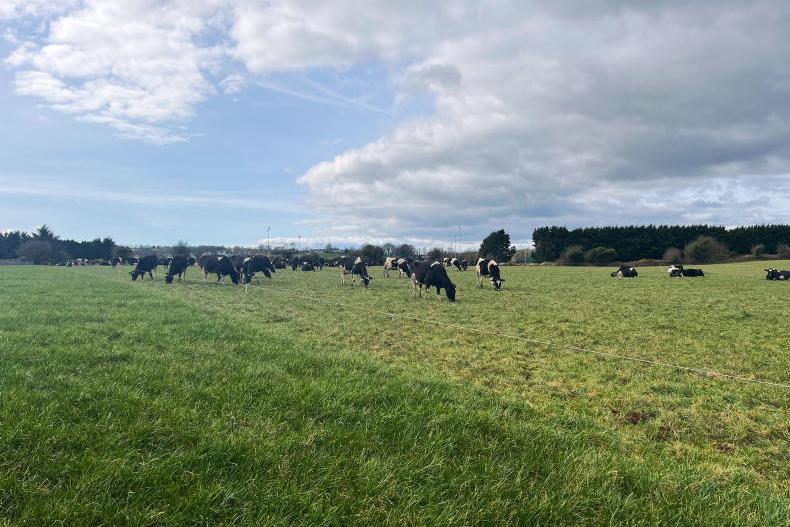Grass budget: After a superb week for grazing when a lot of herds got out to grass, those who have a good share of the farm grazed need to be keeping one eye on grass covers.
Average farm cover – that is the amount of grass on the farm – is variable, and a lot of farmers felt that they lost covers after the frost and snow. While many will look towards the target of having 30% of the farm grazed in February and 60% by St Patrick’s Day, those targets are too crude if the farm is low in grass.
The grass budget is critical in March and early April. I know some farmers have decided to go in with silage this week after reviewing the budget. They do this to ensure that there will be enough grass in the diet by the end of March. It is much better to be feeding a small bit of silage now instead of a lot of silage later, when cows are closer to peak and the negative impact is much greater. I know the weather could change and farmers might have no choice but to feed silage but that’s different to letting the farm run down.
The target is to ensure that average farm cover doesn’t go below 500kg to 550kg at any point. The budget on PastureBase can be manipulated by adjusting grass demand and cow numbers. A grass walk and then a cross-check with the grass budget should be done weekly from now until early April.
Nitrates: The changes to the nitrogen excretion rates and chemical fertiliser allowances, first announced this time last year, are now in place. The Department of Agriculture has said that they would be retrospectively implemented for 2024. The changes to excretion rates are complex to explain but are hugely significant for farmers that are on the edge, for either breaching 170kg N/ha or 220kg N/ha. By using the allowance for low-crude protein concentrates they could reduce their figure enough to get under the limit. It won’t solve everyone’s issues because it’s really only tinkering around the edges.
It’s important to remember that there are two low crude protein rules. The first is for all farmers and that is to feed a maximum of 14% crude protein during summer months, from 15 April to 30 September. Everyone must comply with this. The second rule is optional and that is to have a lower than 15% crude protein on average across the year. There are three new bands in this, offering a greater reduction in excretion rate per cow based on the lower average annual crude protein level being fed. If opting for this, then the crude protein in dairy nuts being fed now will need to be carefully monitored.
Somatic cell count: From looking at the milk recording data, it looks like somatic cell count (SCC) is running a bit lower this year than it was last year, but it is early days. Scheduling an early milk recording will help to identify the high-SCC cows and these can then be quarter sampled with the results sent away for testing, or judged using the Californian milk test (CMT). A good routine is to CMT test each cow before her milk goes back to the bulk tank after calving. This will detect cases early.









SHARING OPTIONS